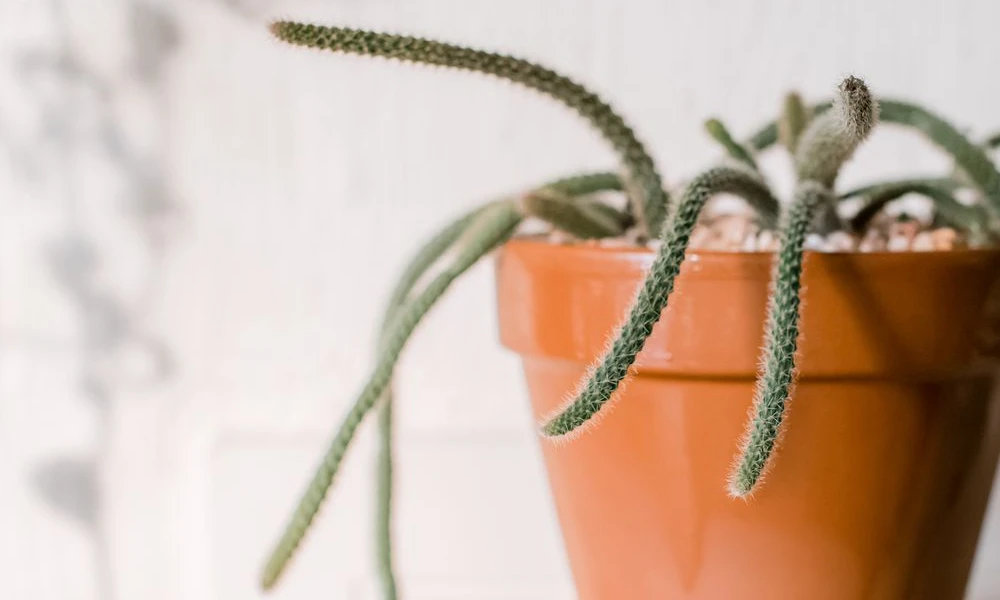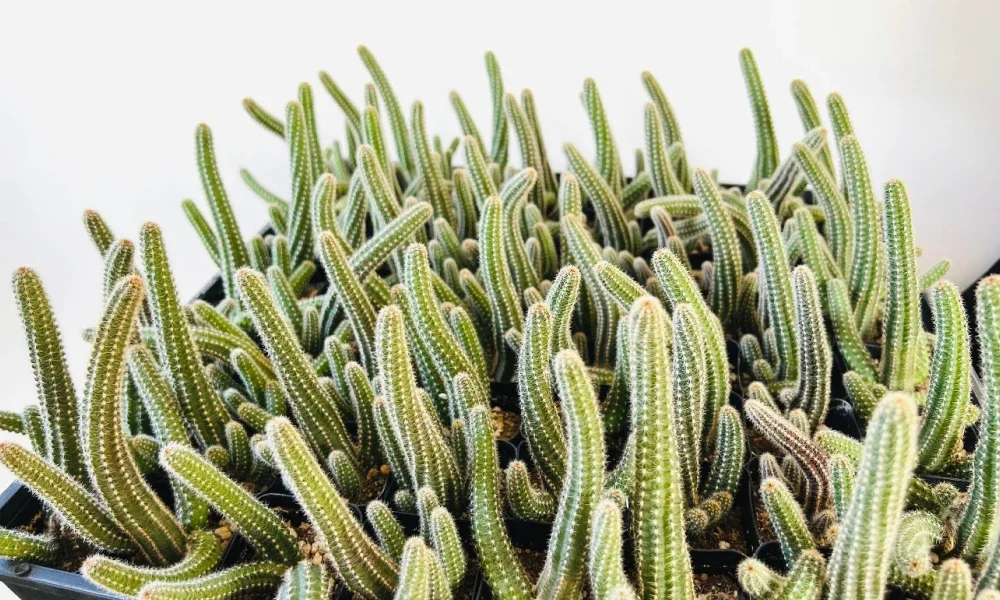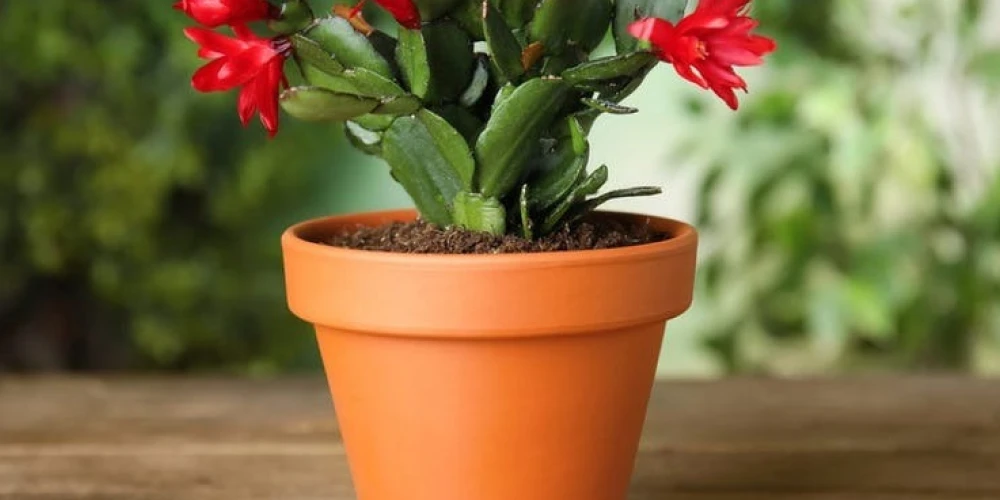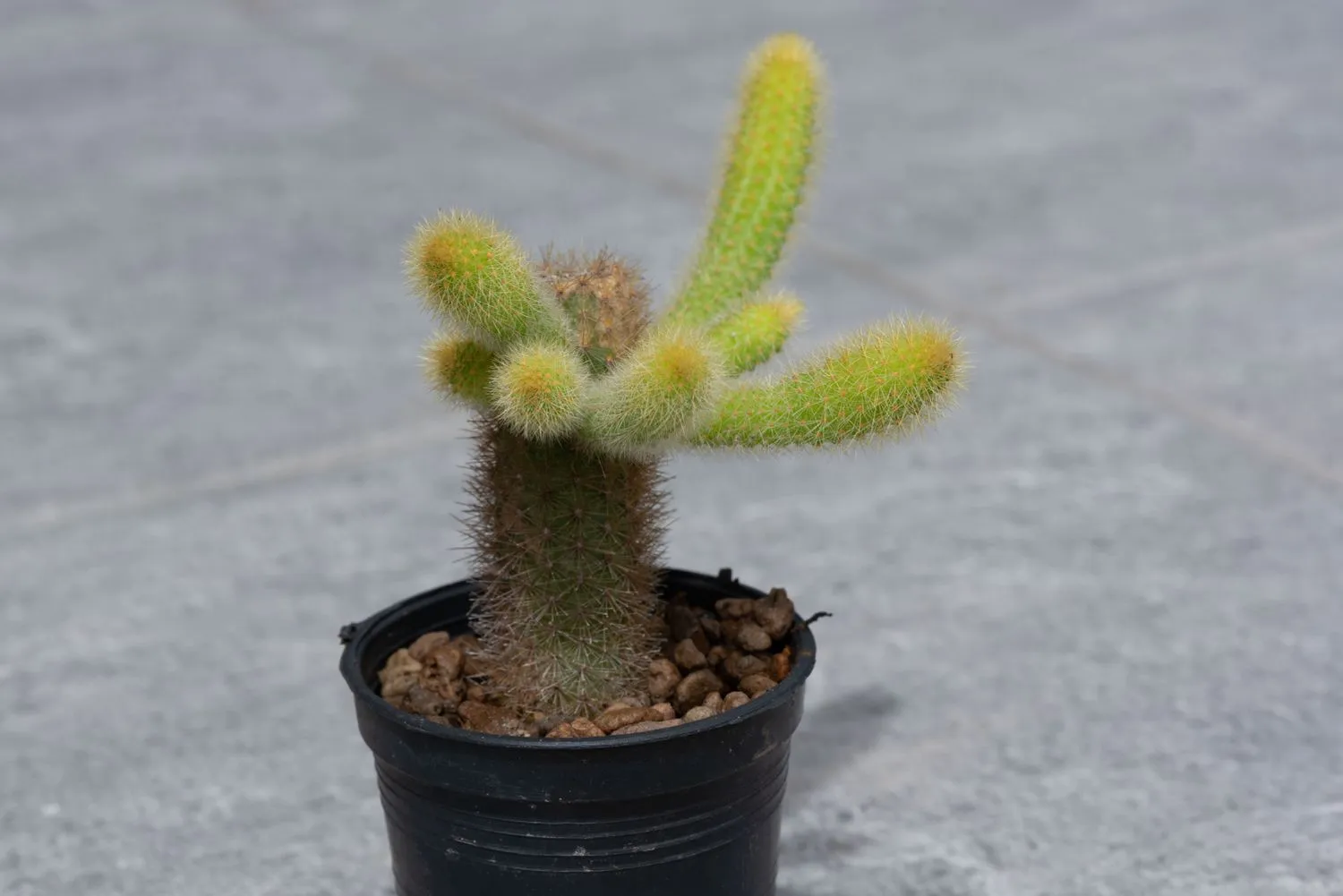The Dog Tail Cactus, known for its robust and sturdy stems, contrasts with the Rat Tail Cactus, which is admired for its slender and flexible growth. This article will delve into the features, care requirements, and aesthetic differences between these two cacti, helping you decide which one might be the perfect addition to your collection.
Overview of Rat Tail Cactus
The Rat Tail Cactus, scientifically known as “Aporocactus flagelliformis,” is notable for its long, slender stems, which can grow up to several feet long and resemble a rat’s tail (1).
The cactus produces vibrant pink to red flowers, which are large and tubular and bloom in spring, adding a striking visual appeal.
Read more: Monkey Tail vs. Rat Tail Cactus
Its trailing growth habit makes it ideal for hanging baskets or containers where it can cascade over the sides.
Here are the key features of Rat Tail Cactus:
| Scientific Name | Aporocactus flagelliformis |
| Common Names | Rat Tail Cactus, Creeping Devil, Rattail Cactus |
| Size | Stems can grow up to 4 feet (1.2 meters) long |
| Blooming Season | Spring to early summer |
| Light Requirements | Bright indirect light tolerates some direct sunlight |
| Watering Needs | Allow soil to dry out completely between waterings; reduce in winter |
| Soil | Well-draining cactus or succulent mix |
| Temperature | Prefers warm temperatures, protect from frost |
| Humidity Preference | Low humidity levels, typical of desert environments |
By understanding these features, you can decide if a Rat Tail Cactus is the perfect addition to your collection!
How do you grow and care for Rat Tail Cactus?
Here’s a breakdown of the light, water, soil, temperature, and humidity needs of your Rat Tail Cactus:
Light
Rat Tail Cactus thrives in bright, indirect sunlight. Imagine a south-facing window with sheer curtains diffusing the light—that’s the perfect spot.
Too much direct sun can scorch the stems, while insufficient light will make them thin and prevent flowering.
Water
During the growing season in spring and summer, water the cactus deeply when the top inch of soil feels dry.
This typically means watering about once every 10-14 days, adjusting based on your specific climate conditions.
Reduce watering significantly throughout the dormant season, fall, and winter. Only water sparingly, approximately once a month, or when the soil has dried out completely.
Soil
For your Rat Tail Cactus home, opt for a well-draining cactus mix. This is crucial to prevent root rot.
Most garden centers carry cactus mix, but you can also create your own by mixing equal parts potting soil, perlite, and sand.
Temperature
Your Rat Tail Cactus prefers warm weather. The ideal temperature range is between 68°F (20°C) and 100°F (38°C).
However, this cactus is relatively adaptable and can tolerate cooler temperatures down to 45°F (7°C). Just be sure to protect it from frost altogether.
Humidity
Humidity isn’t a significant concern for your Rat Tail Cactus. Regular household humidity levels will do just fine. Extremes are what you want to avoid.
High humidity, especially in winter, can lead to stem rot. On the other hand, very dry air might make your cactus susceptible to spider mites.
Overview of Dog Tail Cactus
The Dog Tail Cactus, scientifically known as Aporocactus flagelliformis, is characterized by its elongated, cylindrical stems, which can grow several feet long and often resemble a dog’s tail.
These vibrant green stems are covered in numerous small, sharp spines. The cactus is particularly admired for its striking flowers, which are large, tubular, and typically bright pink or red.
Here are the key features of the Dog Tail Cactus:
| Scientific Name | Strophocactus testudo |
| Common Names | Dog Tail Cactus, Selenicereus testudo |
| Size | Stems can grow up to 7 feet (2 meters) long |
| Blooming Season | Spring to summer |
| Light Requirements | Bright indirect light tolerates some direct sunlight |
| Watering Needs | Allow soil to dry out entirely between waterings; reduce in winter |
| Soil | Well-draining cactus or succulent mix |
| Temperature | Prefers warm temperatures, protect from frost |
| Humidity Preference | Low humidity levels, typical of desert environments |
By understanding these features, you can choose the Tail Cactus that best suits your preferences and growing conditions.
How to grow and care for Dog Tail Cactus
The Dog Tail Cactus is a relatively low-maintenance succulent that thrives with the right care. Here’s a quick breakdown of its needs:
Light
Dog Tail Cactus enjoys bright, indirect sunlight. It would be ideal if it were placed in a south-facing window with some sheer curtains or an east-facing window.
While it can tolerate some direct sun, avoid harsh afternoon sun as it can scorch the stems.
Water
During the Dog Tail Cactus’s growing season in spring and summer, it’s best to water deeply when the top inch of soil becomes dry.
Depending on the local climate and humidity, it generally requires watering every 10-14 days.
In contrast, during the dormant season in fall and winter, watering is reduced significantly, only sparingly provided—about once a month or when the soil has completely dried out.
Soil
Drainage is vital for Dog Tail Cactus. Use a well-draining cactus mix, which is available at most garden centers.
Alternatively, create your own by mixing potting soil, perlite, and sand. This ensures excess water drains away efficiently, preventing root rot.
Temperature
This cactus prefers warm temperatures, ideal between 68°F (20°C) and 85°F (29°C). It can tolerate cooler temperatures to around 40°F (4°C) but avoids frost altogether.
Humidity
Dog Tail cacti prefer slightly higher humidity than most cacti.
Average household humidity levels are usually sufficient, but if the air is very dry, you can occasionally mist the cactus (avoiding the flowers if present) or place it on a pebble tray filled with water (making sure the pot itself doesn’t sit in water).
Dog Tail Cactus vs Rat Tail Cactus
Here’s a breakdown of the key differences between Rat Tail Cactus and Dog Tail Cactus:
Visual Differences
- Rat Tail Cactus (Aporocactus flagelliformis): This cactus has long, slender, trailing stems that can grow up to 4-6 feet long. The stems are covered in small, hair-like spines, giving them a fuzzy appearance. They are typically bright green to dark green.
- Dog Tail Cactus (Strophocactus testudo): The Dog Tail Cactus has thicker, more robust, trailing stems but can be much thicker than the Rat Tail Cactus. The stems are a deeper green and have more pronounced ribs.
Care Differences
- Rat Tail Cactus: Water moderately during the growing season (spring and summer), allowing the soil to dry out between waterings and reduce watering in the winter. The plant prefers bright, indirect light but can tolerate some direct sunlight. It thrives best in well-draining cactus or succulent mix soil and temperatures between 50-75°F (10-24°C).
- Dog Tail Cactus: Like the rat tail cactus, water the plant moderately during the growing season and sparingly in the winter. It can handle more direct sunlight and prefers bright light. Plant it in a well-draining cactus mix with added sand or perlite. It thrives best in warmer temperatures, around 60-80°F (15-27°C).
Growth Rates
- Rat Tail Cactus: Grows relatively quickly, especially in ideal conditions with bright light and proper watering. New stems can grow several inches per year.
- Dog Tail Cactus: Generally grows slower than the Rat Tail Cactus. Its thicker stems develop more gradually but can still achieve significant length over time.
Blooming Period
- Rat Tail Cactus: Typically blooms in the spring. The flowers are bright pink to red, tubular, and can be large relative to the stem size.
- Dog Tail Cactus: Blooms in late spring to early summer. The flowers are usually white or cream-colored and can be large and showy.
Spine Characteristics
- Rat Tail Cactus: Has numerous small, hair-like spines that cover the stems densely. The spines are not very sharp but can still be irritating to the touch.
- Dog Tail Cactus: Features more substantial and fewer spines than the Rat Tail. The spines are more pronounced and can be quite sharp.
Maintenance
- Rat Tail Cactus: Requires regular pruning to manage its length and prevent it from becoming too unwieldy. It benefits from occasional fertilization during the growing season.
- Dog Tail Cactus: Generally low maintenance but may need occasional pruning to manage its size. It is less prone to becoming overly long and tangled than the Rat Tail Cactus.
Ultimately, both Rat-Tail and Dog-Tail Cacti offer distinct beauty and are relatively easy to care for. Consider your preferred aesthetics and desired growth habits when making your decision.
Common Uses and Display Ideas
With their distinct looks and easy-care requirements, these delightful cacti make excellent additions to any home. Here are some suggestions for how to utilize and showcase them:
Indoor Decoration
- Rat Tail Cactus: Ideal for hanging baskets, where its slender, bristly stems can cascade beautifully. It also works well in large terrariums or mounted on decorative structures for a striking display.
- Dog Tail Cactus: Best displayed in hanging baskets, with its elongated, sharp-spined stems trailing down. It makes a striking centerpiece in indoor arrangements or terrariums.
Outdoor Gardening
- Rat Tail Cactus: Perfect for outdoor hanging baskets or containers in bright, sunny locations. It pairs well with other drought-tolerant plants such as agave and echeveria.
- Dog Tail Cactus: Performs well in outdoor gardens with well-drained soil and plenty of sunlight. It complements other arid-environment plants like yucca and aloe.
DIY Projects
- Rat Tail Cactus: Ideal for creating living art frames or succulent topiaries, adding both texture and color to DIY gardening projects.
- Dog Tail Cactus: Ideal for crafting vertical gardens or mixed succulent arrangements in creative containers like repurposed pots or vintage items.
Common Issues and Solutions
While these cacti are generally low-maintenance, a few issues can still occur. Here is a breakdown of common problems and their solutions for all three types:
Pest Control
- Rat Tail Cactus: These cacti are prone to aphids and scale insects. To remove pests, use a cotton swab dipped in alcohol or apply insecticidal soap. Regularly inspect your plants to catch infestations early.
- Dog Tail Cactus: Susceptible to mealybugs and spider mites. Use neem oil or insecticidal soap to treat infestations and keep the area around the plant clean to deter pests.
Disease Prevention
- Rat Tail Cactus: These cacti are susceptible to fungal diseases. To prevent these, avoid overhead watering and ensure the plant is in well-draining soil. If necessary, treat with fungicides.
- Dog Tail Cactus: If overwatered, it can develop root rot. Use a well-draining cactus mix and water sparingly. Fungal infections can be managed with fungicides and by keeping the plant dry.
Troubleshooting Growth Problems
- Rat Tail Cactus: If the plant grows leggy, it likely needs more light to ensure ample sunlight. Insufficient light or nutrients can also cause a lack of blooms, so fertilize appropriately during the growing season.
- Dog Tail Cactus: Leggy growth indicates a need for more light. Relocate to a sunnier spot. If the plant isn’t blooming, ensure it gets enough sunlight and reduce water during the dormant period to encourage flowering.
Conclusion
While the Dog Tail Cactus and Rat Tail Cactus may appear similar at first glance, their unique features and growth habits offer distinct appeals to plant enthusiasts.
The Dog Tail Cactus, with its thicker, more rigid stems, provides a bold and resilient presence, whereas the Rat Tail Cactus, with its delicate and cascading stems, adds a touch of elegance and grace to any space.






